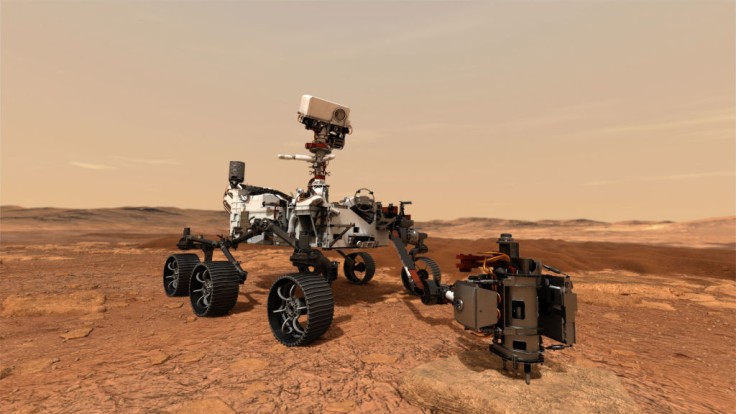
In one of the latest NASA Mars Rover pictures, one really stood out. It sparked a lot of curiosity since what was captured was clearly not from the red planet.
However, before jumping into conclusions--like some people online did--it's not an alien artifcat. In fact, the object in the photo is man-made: a cylindrical drill bit left by the rover itself.
The NASA Mars Perseverance rover acquired the image using its Left Mastcam-Z camera, which is a pair of cameras that is located up high on the rover's mast.
NASA Mars Rover Pictures: Is That a Drill Bit?
On February 16, NASA's Perseverance rover captured a Mars photo that depicts a fairly typical stretch of dusty and rocky landscape.
In the middle of the image of the rocky Martian surface, however, lies something strange. Something that was unquestionably created by humans.
Hey what is that object in Mars Perseverance's RAW image (Sol 353) acquired on Feb. 16, 2022? A proof of ancient aliens as exposed on these days by some UFO grifters? 🤣 Nope, it's a drill bit intentionally dropped by @NASAPersevere, as exposed here: https://t.co/gJuJATQqYV pic.twitter.com/2NrsHARAmX
— ufoofinterest.org (@ufoofinterest) February 20, 2022
According to NASA, the cylindrical object is an abrading bit that the rover ditched in July of last year, per Cnet. The cylindrical drill bit found on Mars was installed to the rover prior to launch in order to "close out the drill and keep the inside protected."
I used this abrading bit to scour a small hole in this rock, where I could leave it behind. On to more science ahead!
— NASA's Perseverance Mars Rover (@NASAPersevere) July 23, 2021
Bonus: if you can overlap these images with 3D vision like me (or can use a stereo viewing device), you can get a 3D view of this Martian art installation. pic.twitter.com/bKMqVANafK
New Location for NASA Perseverance Mars Rover
According to Space.com, unlike its first year on Mars, the Perseverance rover is expected to have even more exciting experiences during its second year on the planet.
It began searching for signs of ancient Mars life in 2021. It was when the car-sized Perseverance rover touched down inside the Red Planet's Jezero Crater, where it collected hundreds of samples.
In the distant past, the 28-mile-wide (45-kilometer-wide) Jezero region on Mars was home to a large lake and a river delta. The NASA Perseverance team members believe it makes it an ideal location for such research.
NASA Perseverance Rover
A year since landing on Mars, NASA's Perseverance rover has achieved a slew of firsts.
However, the six-wheeled rover has more significant missions in store as it speeds toward its new destination and the start of a new science campaign.
A series of follow-up NASA missions, conducted in collaboration with the European Space Agency (ESA), will send spacecraft to Mars to collect these sealed samples from the planet's surface and return them to Earth for further analysis.
One of Perseverance's goals on Mars is the study of astrobiology, which includes the search for signs of ancient microbial life. Perseverance is the heaviest rover ever to land on the surface of Mars weighing approximately 1,025 kilograms.
It also aims to study the planet's geology and past climate to pave the way for human exploration of the planet.
The Perseverance rover is also one of the the integral components of NASA's Moon to Mars exploration.
Related Article: Life on Mars? NASA Discovers Abundant Water Source In The Red Planet









